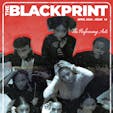BY: COURA FALL
Fashion has a long-standing history in our society. For as long as humans have existed, we have needed clothing to cover our backs, and the refinery of cloth-making has produced the fashion industry. The industry is constantly evolving, with new styles coming, going and returning. However, it seems like the industry is going through a transformation unrelated to fabric and color schemes. The fashion industry's embrace of diversity, from skin tone to size, feels like a new page in a constantly recurring story, at the center of this chapter is South Sudanese model Adut Akech.
Adut is a young model who broke into the fashion world during an Yves Saint Laurent show in 2017. She is the antithesis of the traditional beauty standard, which distanced itself from dark skin, curly hair and full lips. However, Akech's stardom and embrace by the industry is both refreshing and baffling. Akech represents the fashion world's shift towards appreciation for diversity.
Through advertisements, product design and display more brands have shown that they are catering to a wider and more expansive market that includes people of all skin tones, sizes and gender identities. This change is recent compared to the long history of fashion's absence of diversity, as 38.6% of models in New York, Milan and Paris are non-white, some of the highest rates yet. So what changed?
The industry's progress is demonstrated through the manufactured rivalry between Tyra Banks and Naomi Campbell during the 90s. In a field where white models were the standard, only one anomaly, in the form of a Black model, could be allowed. Due to this unofficial rule, Banks and Campbell were forced to compete against one another, and it wasn't until recently that they reconciled, all because of the cut-throat nature of the industry.
But today, the position of Black models in high fashion is parallel to that of twenty years ago. Models like Adut Akech, Anok Yai, Alton Mason, and Duckie Thot not only exist in the fashion industry, but they exist at the same time, allowing for an increased amount of representation.
A major part of the change allowing models like Adut Akech to thrive is the universal embrace of diversity, and designers are finally picking up on the importance of adopting that view in the creation and execution of their projects. As creative director Pierpaolo Piccioli and pioneer of racial diversity in fashion puts it, "my job is to bring my inclusive vision of beauty. Streetwear is something different, but when people see black girls in couture, the highest point of fashion, the job is done."
Designers using their privilege to select models that reflect their consumers is not only the right thing to do, but it only supports their bottom line. Black girls all over the world, whether it is in fast fashion or high fashion, are allowed to feel like products are meant for them because they see themselves in the people wearing those clothes.
To answer the question of "what changed the fashion industry's approach?", it is the outlook and understanding of the fashion industry that diversity is the foundation for everything. Brands like Fenty Beauty serve as an example of diversity in action. The brand is incredibly successful because of their ability to provide products that promote inclusivity, therefore, increased participation in their brand and growth in their influence and revenue.
Representation is what makes people feel valued and reflected in movies, pop culture and fashion. As Civil Rights activist Marian Wright Edelman said, "you can't be what you can't see," and the prominence of models like Akech helps people open their eyes and see their reflection.


